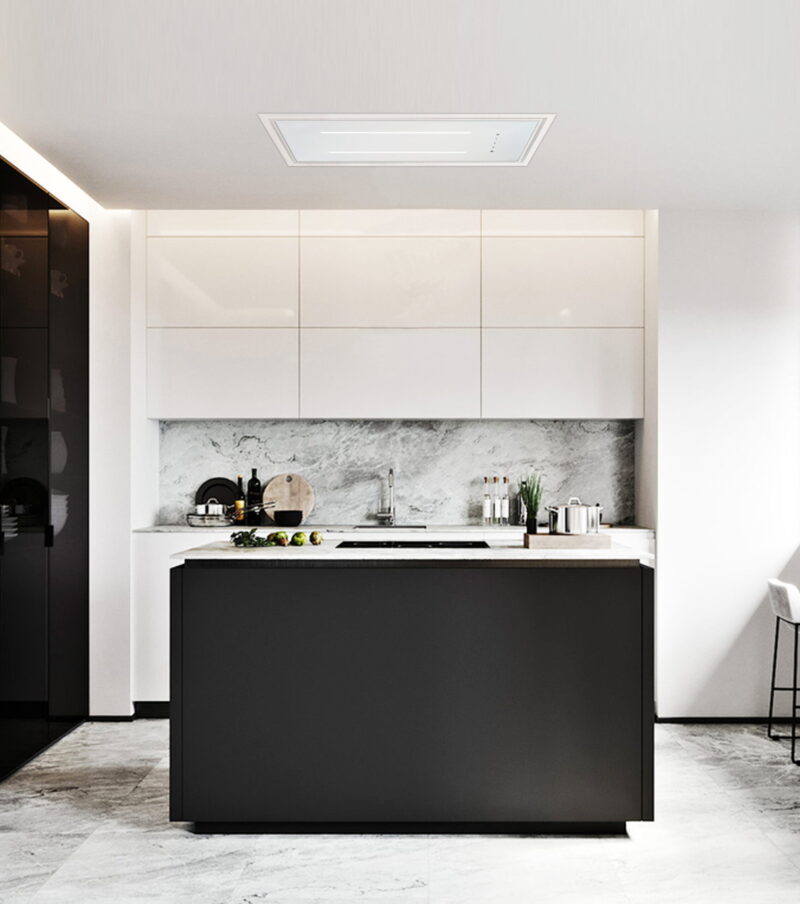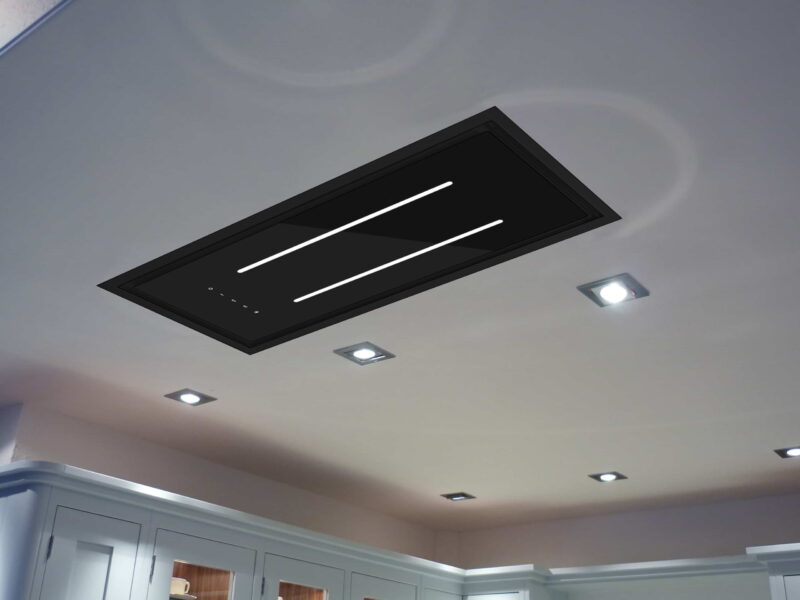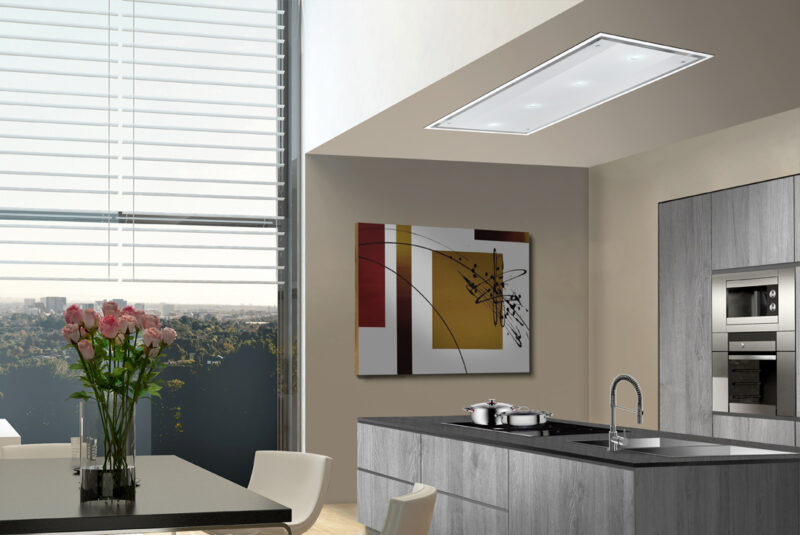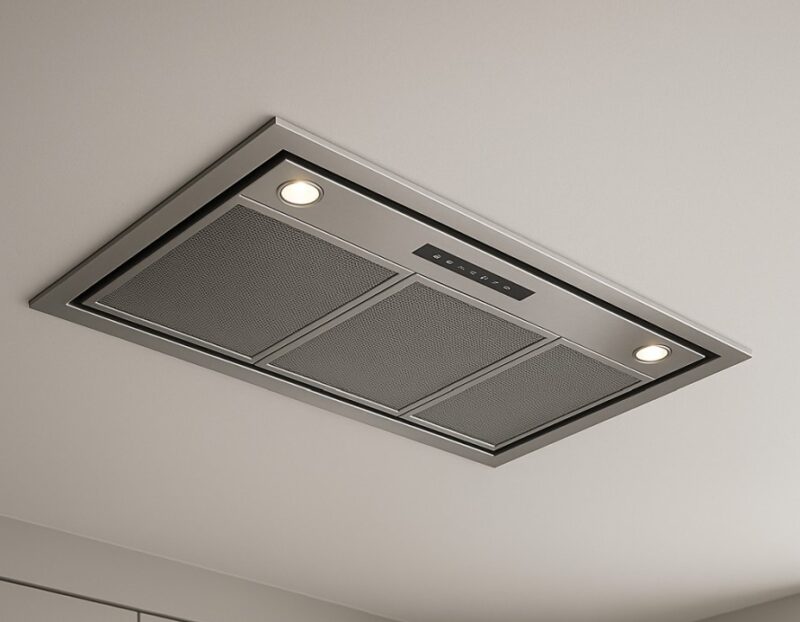Proper ventilation is essential in the kitchen. Many people overlook it until the smell of cooking fills the house. A growing number of British homeowners are installing ceiling hoods. They provide both fashion and practicality. They also complement design aesthetics and conserve space.
Why Should Your Kitchen Have a Ceiling Hood?

When compared to wall-mounted extractor fans, ceiling-mounted ones offer numerous advantages:
- Space efficiency: Ideal for peninsulas or kitchen islands where wall mounting is impractical
- Improved aesthetics: Produces a more streamlined, clean look that doesn’t interfere with sight lines.
- Better extraction: Directly above cooking surfaces for the best fume capture. Adaptable kitchen designs enable more imaginative design options in open-plan areas.
- Lower noise levels: Compared to traditional wall-mounted units, many models run more silently.
Ceiling hoods offer numerous advantages. Given the growing popularity of kitchen-dining combos in contemporary British homes, they are particularly alluring.
Comprehending Various Ceiling Hood Types

To accommodate diverse cooking styles and kitchen layouts, the market provides a range of ceiling hood configurations:
- Special units designed for kitchen islands are called island hoods. They frequently have canopies made of stainless steel or glass.
- Extractors flush with the ceiling are discrete devices with little visual impact.
- Retractable units known as down-draft systems emerge from worktops or ceiling spaces when necessary.
- Sculptural hoods that provide outstanding extraction and act as focal points
Manufacturers provide an excellent range of ceiling hoods. There are choices to suit every taste and price range, including striking contemporary pieces that provoke discussion and sleek, Scandinavian designs.
British Home Installation Considerations
Several useful factors need to be carefully considered before choosing your ceiling hood:
- Ductwork requirements: Arrange the extraction ducting routing, which can be difficult in solid-constructed period homes.
- Electrical connections: Professional installation is usually required to comply with UK electrical regulations.
- Ceiling height: The minimum distance between the extractor and the hob (usually 650-750mm for gas hobs)
- Building codes: Certain installations require permission. This is particularly true for conservation areas and listed buildings.
Nowadays, many British suppliers provide full installation services, eliminating the uncertainty of adhering to regional building codes.
Sustaining Optimal Performance
Your ceiling hood will continue to function efficiently with routine maintenance:
- Cleaning of filters: For best results, wash or replace grease filters once a month.
- Annual ductwork inspections avoid obstructions that lower extraction efficiency.
- Professional servicing: The lifespan of a unit is extended by yearly maintenance performed by qualified technicians.
- Surface cleaning: Maintaining hygiene and appearance requires regular wiping with the right cleaners.
Making the Correct Decision

Your needs, kitchen design, and personal preferences all play a role in selecting the ideal ceiling hood.
Consider the following when comparing models:
- Rates of extraction (in cubic meters per hour)
- Levels of noise
- Ratings for energy efficiency
For any kitchen, ceiling hoods are a fantastic option. They provide fresh air, whether you’re remodelling a Victorian terrace or creating a contemporary area. They also give your kitchen a stylish touch. They provide years of dependable service with careful planning and professional installation. They also actually raise the value of your property.
Investing in adequate kitchen ventilation has numerous advantages. It enhances the air quality, reduces cleaning, and increases the enjoyment of cooking for you and your family.


